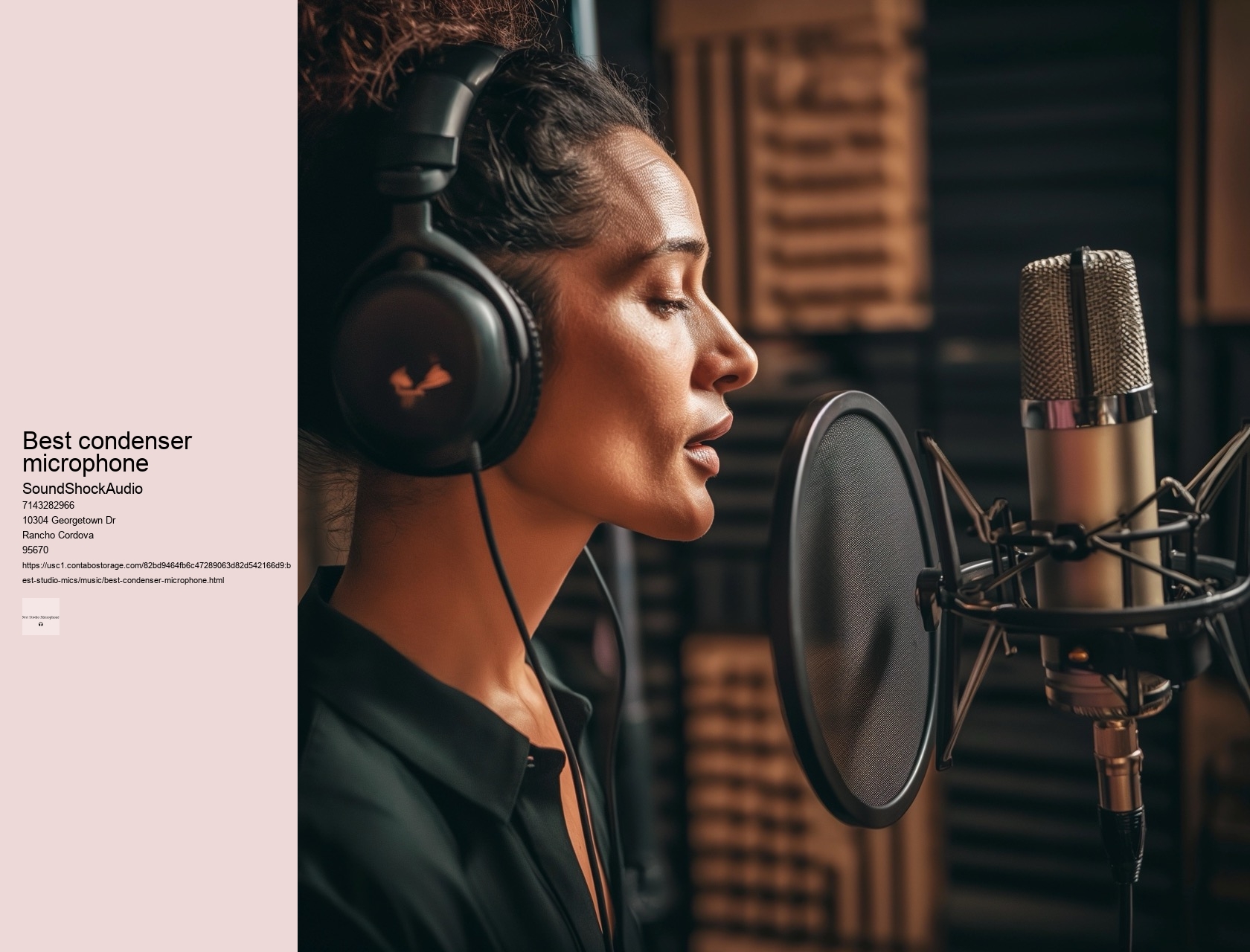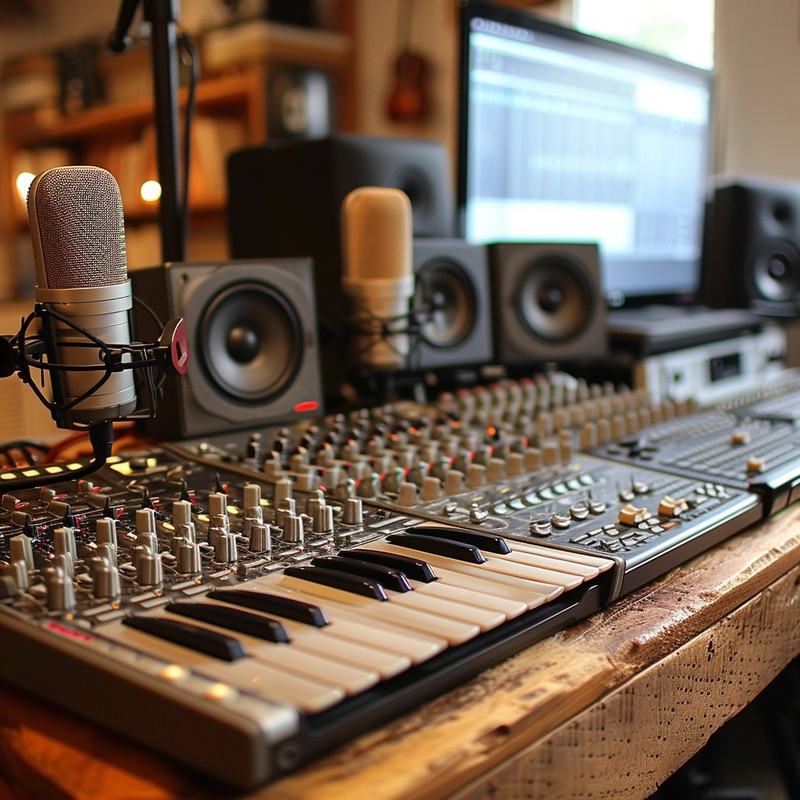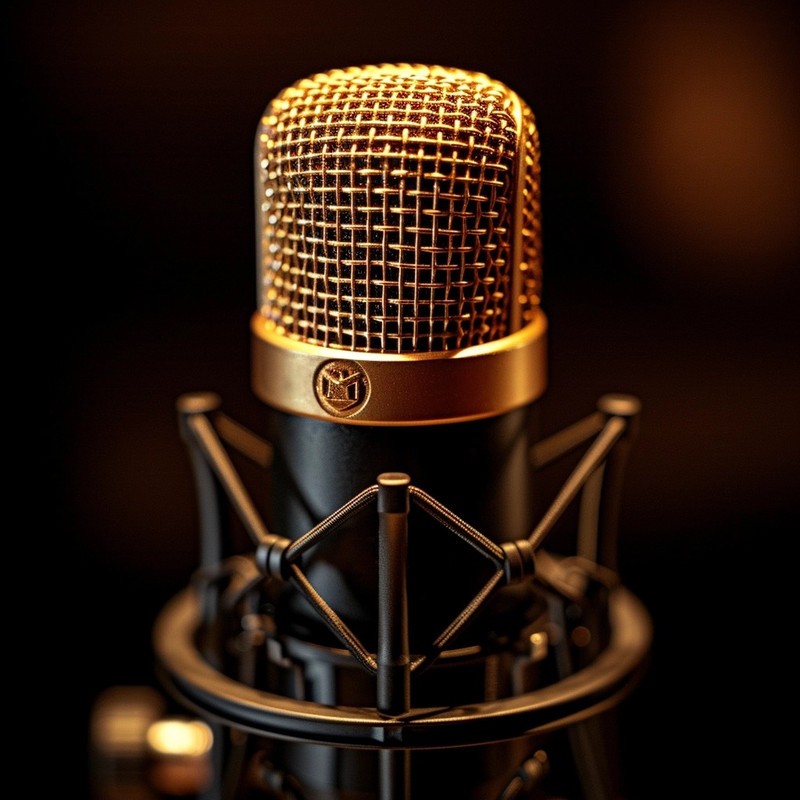

This recording microphone from Rode is not cheap, but it is built to last. To find out which microphone to buy, check out the best studio microphones on SoundShockAudio.. Their lower sensitivity to ambient noise ensures that only intentional sounds are captured—crucial for maintaining clarity within recordings. Its pattern versatility allows for creative miking techniques across various acoustic environments — from intimate vocal booths to grand orchestral halls.
Condensers work well for recording voice, especially in studio settings. setup Lastly, considering specialized environments such as orchestral halls or choir lofts necessitates mics that can wrangle wide frequency ranges while maintaining balance and spatial accuracy.
The Shure SM27 is our choice for the best microphone for recording at home. Keep an eye out for mic patterns and types when searching for a recording studio microphone.
ANDREW ANDERSON shows you how... Therefore, investing in a good audio interface is just as important as selecting the best microphones for any serious recording endeavor.
They take the low-level output from microphones and boost it to a line-level signal, which is necessary for further processing.
Tasked with converting analog waves into digital bytes, these devices are pivotal for preserving the nuance and texture of performances. They feel solid, and while there is a slight proximity effect it's not overpowering. Finally, Earthworks' QTC series offers ultra-flat frequency response microphones ideal for capturing natural room acoustics or as overheads in drum setups where uncolored reproduction is desired.


The larger Spirit is a multi-pattern condenser with an extra 10dB pad available. Moreover, a high-quality microphone will exhibit low self-noise; it's own electronic hiss should be virtually imperceptible to avoid polluting recordings with unwanted fuzz—a vital aspect when recording quieter passages or acoustic instruments. The multi-pattern option has increased the price, but if you're on a tight budget, there is always the fixed cardioid model.
While microphones are pivotal in capturing flawless recordings, the acoustics of your recording space can significantly affect the final output. Imagine painting with worn-out brushes or sculpting with blunt tools; no matter your skill level, the final product will suffer.
However, avoid over-treating with panels; an excessively dead space can render recordings lifeless. This divergence necessitates careful consideration when selecting a microphone that will not merely record but elevate one's auditory creations to professional heights.
Invariably, durability matters too; a well-constructed microphone withstands years of use while maintaining its audio fidelity. Additionally, some microphones feature low-cut filters which roll off lower frequencies to diminish rumble from HVAC systems or outdoor traffic.
The speaker cone and mic diaphragm are basically doing the same thing, but in reverse. They excel at capturing loud sources without distortion, which is why they are often the favorites for recording instruments like drums and electric guitars. Renowned for its sensitivity and wide frequency response, such a mic can articulate the subtlest inflections, breathing life into every lyric.
Some microphones can capture a wide range of sounds, while others specialize in specific instruments or sounds. Preamps serve as the initial amplifiers of the delicate signals produced by microphones, providing the necessary gain while striving to maintain transparency.
The quest for the best studio microphone can feel like an odyssey amidst a sea of specs, brands, and advice. For vocalists, clarity and warmth are paramount.
While many aspects contribute to capturing crystal-clear sound, the choice of a studio microphone is undoubtedly foundational. But if we were to choose the least likely option every six words, we might instead suggest an obscure or less suitable microphone for studio-quality sound capture.

Location recording introduces another theater of operation where durability wrestles with audio fidelity. Vintage units can be used to add instant vibes to tracks. These "studio staples", which are the foundation of any microphone locker, are also found in professional studios around the world.
Invest wisely in distinguished equipment that will not only fulfill your immediate needs but also support your growth as an audiophile or professional recorder—the fruits of such investment will undoubtedly resonate through every note captured by your chosen microphone.- Emphasizing the long-term benefits of choosing the right microphoneSelecting the ideal microphone for studio-quality recordings is like choosing an artist's finest brush or a chef's most prized knife. A large-diaphragm condenser microphone typically becomes the go-to choice due to its sensitivity and ability to capture the full range of human voice nuances.
But if you prioritize simplicity or are constrained by budget or space, USB mics present an attractive alternative. The MV7 has a number of neat tricks that make recording as easy and enjoyable as possible.
Sharing insights with fellow audio enthusiasts can also broaden your horizon and introduce you to methods you hadn’t considered before. The Variable-D is what Electro-Voice refers to as a perforated tube placed behind the diaphragm.
A 44 might be the answer if your song or session demands the best in natural sound and vintage vibe. This is a great investment for anyone who wants to upgrade their gear and bring their tracks up to the next level. In our frequently asked questions section, we answer the most common questions about studio microphones used for recording vocals.
The cardioid pattern is akin to a focused beam of light, illuminating only what stands directly before it while shrouding peripheral noise in soft shadows. Rode NTK includes accessories such as a power supply and shock mount.
You'll sound like you, but better. The best microphones boast a flat or neutral frequency response for versatile applications, ensuring accurate reproduction without coloration.
This guide is broken down into bite-sized pieces based on what you're recording. Meanwhile, drum kits demand a multi-mic strategy: overhead condensers grasp cymbal shimmer and room ambience, snare-specific dynamics focus on crackling backbeats, and kick drum mics harness low-end punch.
Professional musicians often use a variety of microphones depending on the application, but some popular choices include the Shure SM7B for vocals, especially in studio settings, and the Neumann U87 for its versatility and high-quality sound reproduction. For live performances, the Shure SM58 is a widely favored option due to its durability and ability to handle high sound pressure levels.
Justin Timberlake has been seen using a variety of microphones throughout his career, but he is often associated with high-quality, professional-grade microphones for both studio recordings and live performances. Specifically, for live performances, he has been known to use the Shure Beta 58A, a dynamic microphone popular among vocalists for its clarity and durability.
Determining the "highest quality microphone" is subjective and depends on the specific application, such as studio recording, live performance, or broadcasting. However, brands like Neumann, especially the Neumann U87, are often cited among professionals for their exceptional sound quality and reliability in studio settings. Other high-end brands include Telefunken and Sennheiser, which also produce microphones praised for their clarity and performance.
Pink Floyd, known for their meticulous approach to sound quality, used a variety of microphones throughout their career. For their studio recordings, they often used high-quality condenser microphones like the Neumann U47 and U87, which are renowned for their clarity and versatility. Live, they also utilized dynamic microphones such as the Shure SM57 for instruments and SM58 for vocals, which are durable and reliable for performances.
Famous singers often use high-quality condenser microphones in the studio for their detailed and accurate sound reproduction. Popular choices include the Neumann U87, known for its versatility and warmth, and the Telefunken ELA M 251, prized for its rich, detailed sound. These microphones are favored for their ability to capture the nuances of vocal performances.